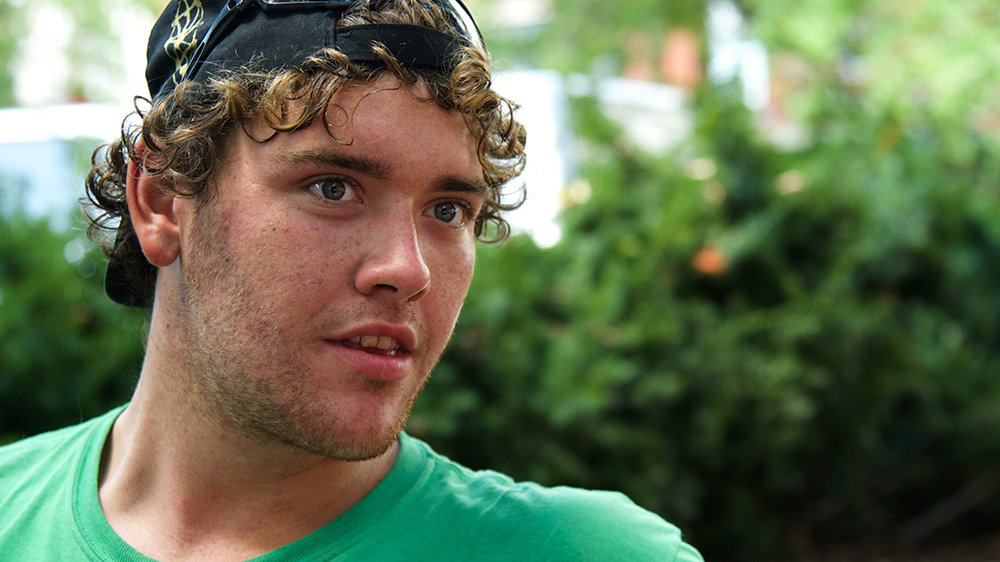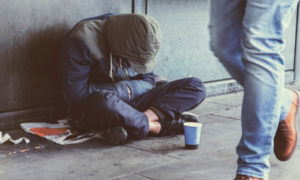
Chapin Hall
.
A national report released today dramatically counters the notion that youth homelessness is mostly a big-city problem.
Youth homelessness is just as prevalent in rural America as in urban areas, but rural youth and young adults are less likely to have jobs, be in school or have access to services, the University of Chicago’s Chapin Hall found.
“Missed Opportunities: Youth Homelessness in Rural America,” is Chapin Hall’s fifth installment on youth homelessness.
Last year, the policy research center unveiled its most groundbreaking look at youth homelessness in the U.S. That report found more than 4.2 million young people between the ages of 13 and 25 had experienced some form of homelessness during the past year. It was the first time any organization tracking young homeless people has pinpointed how many homeless youth are out there.
Even so, other experts say that report may not have captured those who are off the grid and may be, for instance, couch surfing, something rural homeless youth are twice as likely to do compared to their big-city peers.
This latest report takes a deeper dive into the geographical challenges young homeless people face. It found 9.2 percent of rural young adults 18 to 25 years old said they were homeless during the past year while 9.6 percent of their urban peers said they experienced homelessness during that same time. Similarly, 4.4 percent of rural young people ages 13 to 17 reported being homeless while 4.2 percent of urban youth were homeless.
“We now know that American communities of every size have youth who are experiencing homelessness,” said Bryan Samuels, executive director of Chapin Hall. “These new findings make it clear that we need to develop creative housing options and service delivery models that meet the needs of the youth who live in more isolated or rural areas of the country.”
Richard “Cornbread” Howard can attest to that.

Roger Newton
Richard “Cornbread” Howard says there are no resources for the homeless in his hometown.
The 23-year-old traveled some 423 miles from his home in Jasper, Ga. to Henderson, N.C. to get help with his methadone addiction last year. After three months in rehab, Howard was dropped off in Asheville, N.C., where an employee with the rehab center opened the car door and told him “good luck.” Howard, who admits he’s slipped back into drug use, has been on the streets of Asheville ever since.
“Jasper has no form of help for anybody who’s homeless. There’s nothing out there to do except fighting and going to jail or prison,” Howard said. He stays in Asheville because it has more resources for finding steady places to get free food, he said.
When he was in Jasper and homeless, he had to resort to “going to Walmart to [steal] food just to eat. Being in a town with no homeless shelters and no transportation, it was hard to survive,” he said.
The report recommended drop-in centers for youth and roaming outreach workers to make getting services easier for young people in rural areas. And instead of one facility to house homeless youth, it suggested scattered-site long-term housing options and rental assistance.
Additionally, schools need to play a greater role in identifying young people at risk for homelessness. Truancy policies, for instance, should consider challenges young people face in getting to school.
“These findings signal an opportunity for policymakers and stakeholders to re-examine federal programs and fundings,” said Matthew Morton, research fellow at Chapin Hall who oversaw the study. “By ensuring that all of our nation’s youth can count on stable housing, we can help them achieve their full potential and strengthen our communities in the process.”
Chapin Hall’s rural youth report also found:
- Most rural counties lack services designed specifically for homeless youth, forcing them to go without help or travel long distances to get help.
- Rural youth are more likely to be hidden in their communities because they often rely on couch surfing at friends’ or strangers’ homes, sleeping in vehicles or staying outdoors.
- Rural youth find it harder to connect with education and employment opportunities than their urban peers.
- American Indian and Alaskan native youth are at more than double the risk of homelessness as other youth, although most were located outside rural areas.
- In rural communities, changes like the collapse of an industry or the emergence of drug abuse epidemics can have profoundly destabilizing effects on disadvantaged families. That, in turn, can influence a young person’s trajectory towards homelessness.































